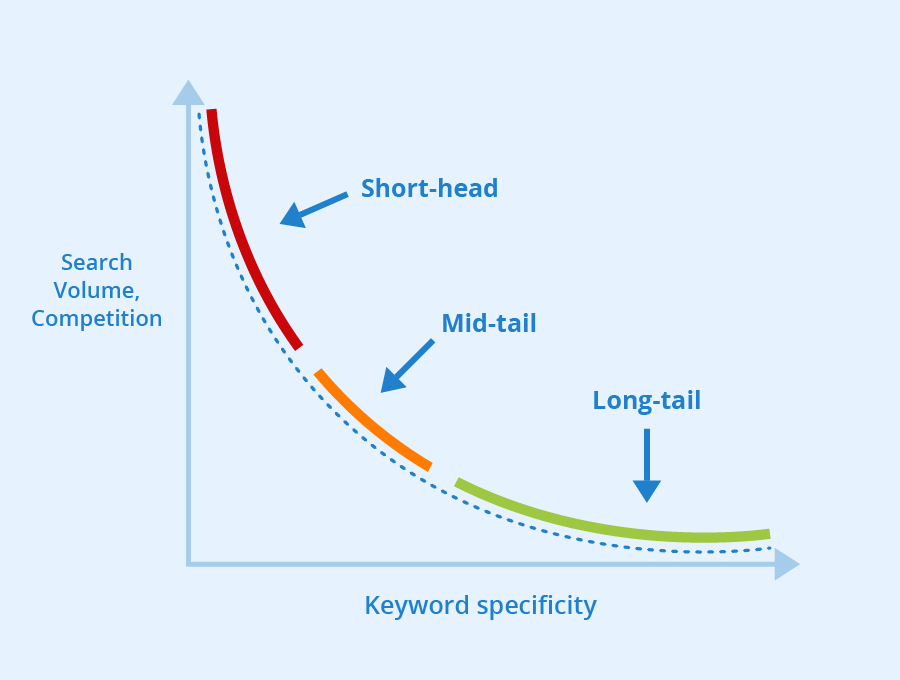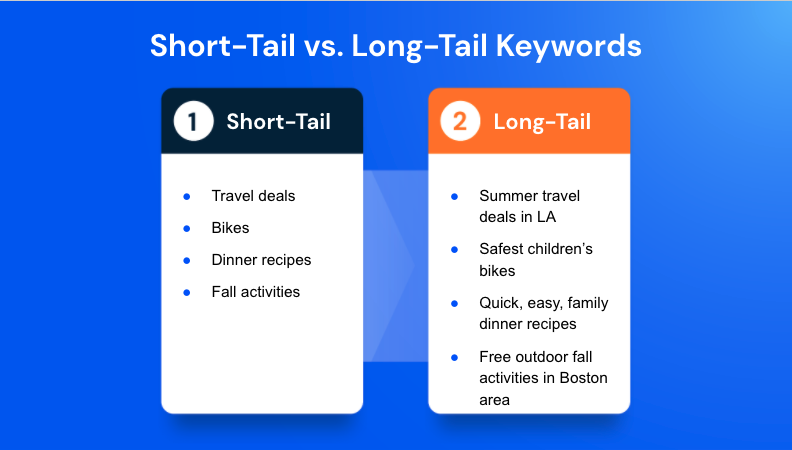In today’s digital age, businesses are looking for at different ways to improve their marketing strategy and build authority. Focusing on long-tail keywords is an effective SEO strategy, especially for new businesses. If you focus on long-tail keywords, you will experience a rise in search inquiries, captivate more customers and amplify your brand’s reach in a short period. In this post, we will learn about long-tail keywords, their importance, and how to use them in your content to drive better engagement rates.
Page Contents:
What are Long-tail Keywords?
Long-tail keywords are longer and specific keyword phrases that users search online to find answers to their queries. These keywords tend to focus more on a specific niche. They usually contain around 3-5 words including the primary keyword. Long-tail keywords tend to have a lower search volume than short-tail keywords. Hence, these are easy to rank for in the Google search results.
For example, if you are a company that sells software products, the chances of the keyword ‘software products’ appearing on top of the search results are very less as there is too much competition for the keyword. But, if you make the keyword more specific such as ‘software for educational institutions and organization’ the chances of appearing in the searches increase as there is less competition for a more specific and detailed search term.
Importance of long-tail keywords
More than 70% of the searches are conducted using long-tail keywords. Long-tail keyword search results are much more relevant and specific. This is beneficial for both the users as well website owners. Websites attract more traffic leading to an increased conversion rate. Similarly, users receive relevant and accurate solutions to their queries, adding value to the user experience.
Long-tail keywords are equally valuable for businesses wanting organic traffic and even for advertisers running search engine marketing campaigns. When you bid on long-tail keywords, the cost per click is lower as there is less competition for these terms. So, you get the advantage of obtaining a higher ad ranking without incurring heavy expenses on the campaign.
Furthermore, by evaluating long-tail keywords that people use to find your site, you get to know your audience’s preferences, needs, and requirements, thereby helping you create content that matches their intent. Long-tail keywords are easier to rank for and lead to higher conversions than seed keywords. It is because these keywords are focused on the customer’s intent and provide solutions that can instantly resolve customers’ queries and concerns.
- Long-tail keywords are not much competitive
- They have high conversion rates
- They lead to a detailed and in-depth content
- These keywords satisfy more diverse search queries
- They are easier to rank
- Helps you optimize for voice search and semantic search.
- They provide targeted traffic to the site
How to use long-tail keywords?
Keyword research
You can conduct keyword research by entering the product or service into the Google search bar. Evaluate the top ten results that rank on the list to get an idea of which terms rank the highest. You can also refer to ‘People Also Ask’ or ‘Related Searches’ to get a detailed analysis of the keywords that are ranking.
Buyer personas
Select your audience before you begin with your SEO campaign. When you have decided which target customer group to cater to, you are more likely to succeed in your digital marketing strategy.
Create content optimized around these keywords
Now, start writing the content optimized around the keywords. Make sure to include long-tail keywords in your blog post headings and sub-headings. Ensure that the keywords are inserted naturally without keyword stuffing.
Long-tail keywords must be an integral part of your content marketing strategy. Nonetheless, stay away from keyword overloading as it may damage the content quality. Employing keywords into your content contributes to enhancing relevance and forming a relationship with your intended customers.

